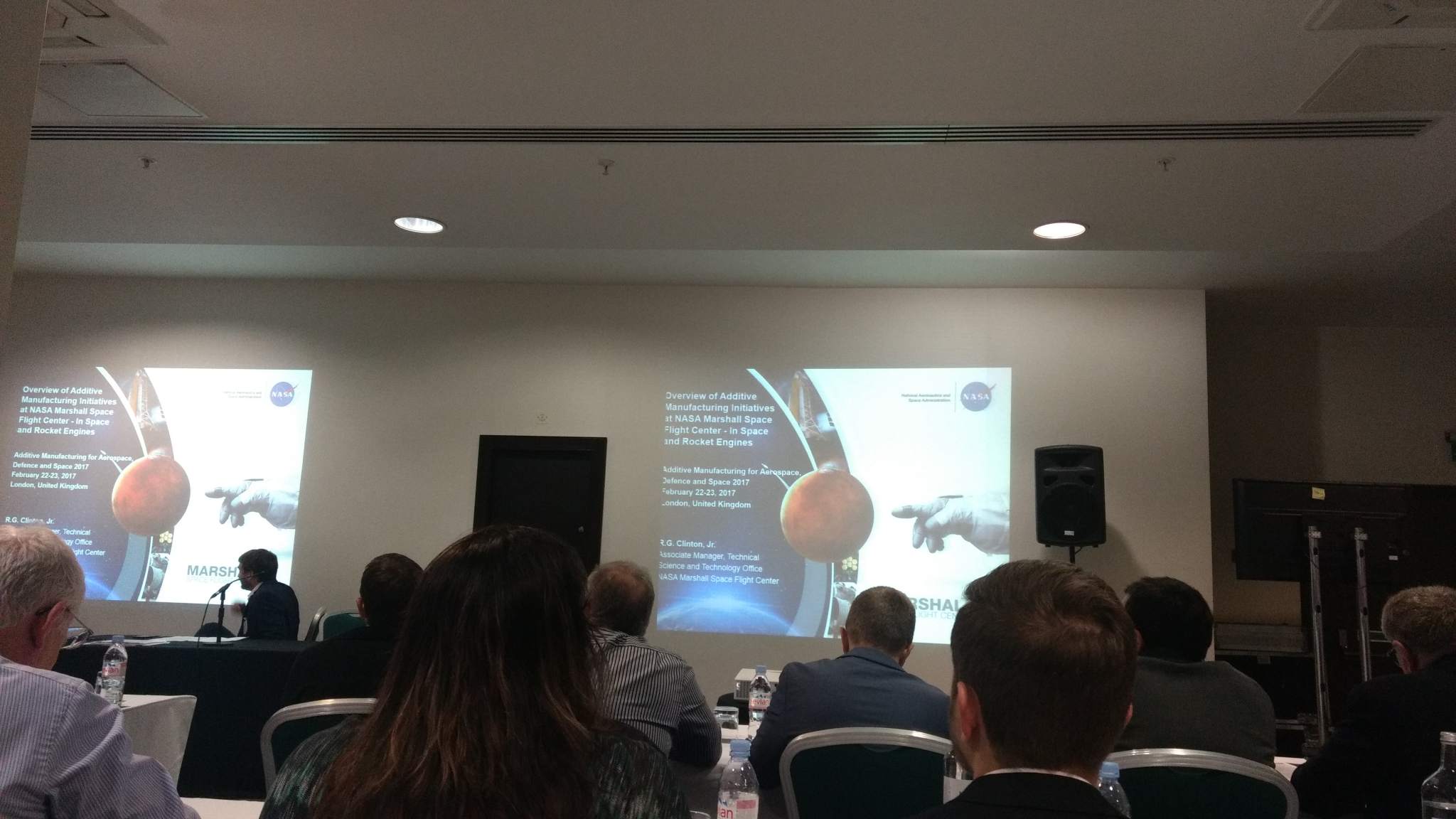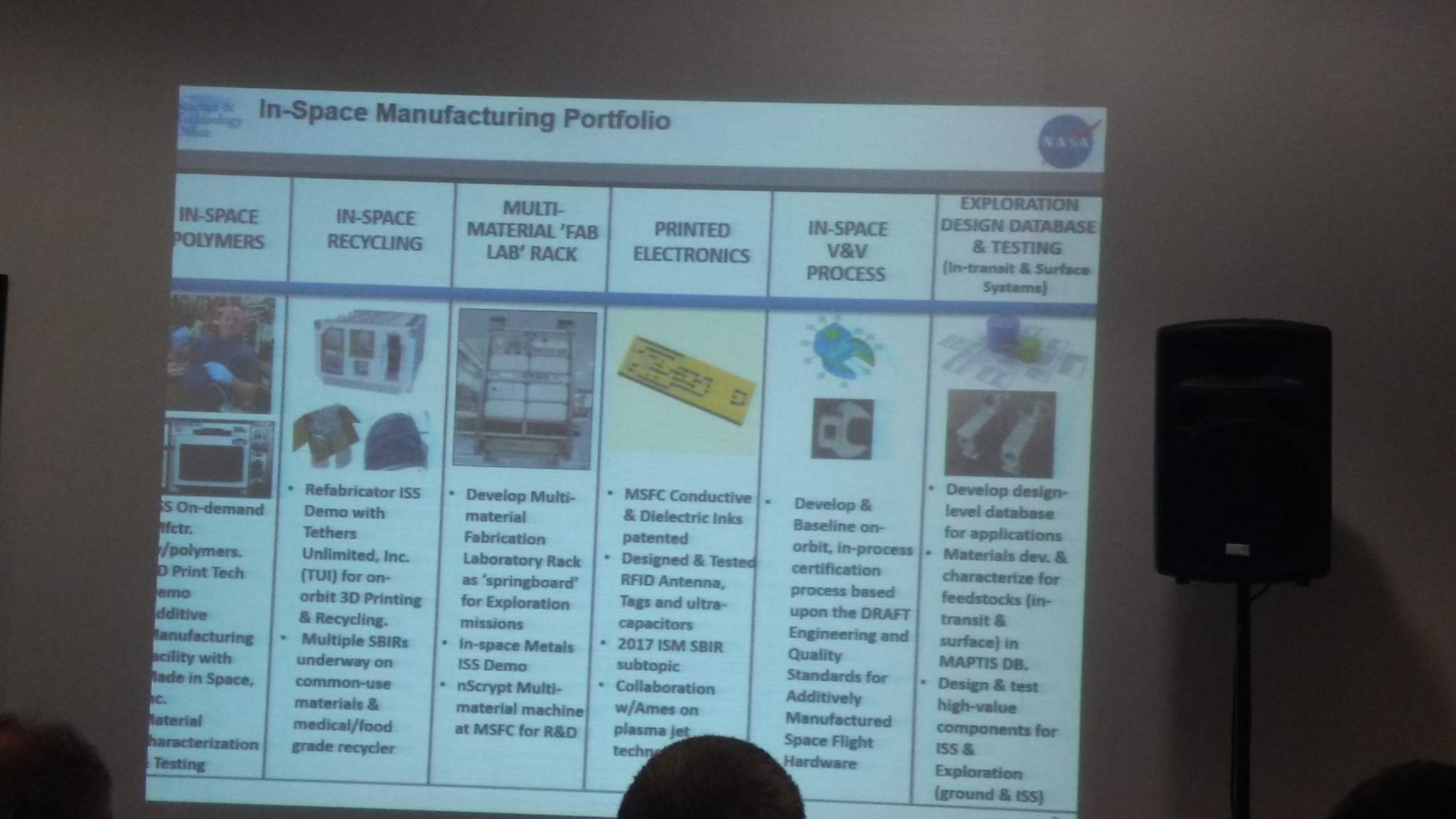NASA has pondered the idea of manufacturing in space for nearly twenty years. Now, with the use of additive manufacturing technology, they are closer than ever before.
In a talk at Defence IQ’s Additive Manufacturing for Aerospace, Defense and Space conference in London, NASA’s Dr. Raymond ‘Corky’ Clinton explains how the U.S. space agency is working with 3D printing to enable in-space manufacturing (ISM). Dr. Clinton is NASA’s Acting Manager of Science and Technology Office, at Marshall Space Flight Center. During this talk, Clinton gave an update on the space agency’s plans for the technology and possible challenges.

3D Printing Industry recently saw how NASA are exploring the method of 3D printing on Mars using local regolith materials. Regolith refers to the bedrock material found on a planet. On Mars, there are metals contained in this material which they believe may be able to be 3D printed on the planet.

3D printing regolith
During today’s presentation, Clinton explained how NASA first began their assessment of ISM back in 1999, at the time working with FDM technology. This approach was phased out due to lack of funding. However, the initiative was brought to life again a few years ago and now NASA are looking at how it can be used to advance space exploration.
By working with Mars regolith, Clinton believes they will be able to produce habitats, roads, or “whatever you need.”
In-space manufacturing is already possible, thanks to space company Made in Space’s 3D printer. This 3D printer is currently on the International Space Station, and there are plans to use it to create fiber optic cables. Using the zero-gravity 3D printer, Made in Space will manufacture fiber optic cables that are too difficult to manufacture back here on earth.
During today’s presentation Clinton explains that working with in situ materials and additive manufacturing does present challenges, and that NASA are working on these currently. However, once these challenges are overcome there are a wealth of possibilities for off-world manufacturing.

Paradigm shift
According to Clinton, NASA views in-space manufacturing as a necessity for advancing space exploration. Clinton states that, “ISM is a necessary paradigm shift in space operations, not a ‘bonus’.” If the goal is to get to Mars by 2035, Clinton says we, “Have to shift the paradigm right now.”
Clinton explains that one of the largest challenges for in-space manufacturing is developing confidence in the product and this stems from the designers to the astronauts themselves. One way to do this is with education, Clinton states that educating the young is paramount to getting acceptance for the technology. Since, if future generations have a better understanding of the technology and its capabilities then it is more likely the technology will be accepted.
Sign up to our newsletter for the latest 3D printing news and follow our social media channels for all the latest news about additive manufacturing.
Featured image shows a 3D printed mallet finger splint at the International Space Station. Photo via NASA.



